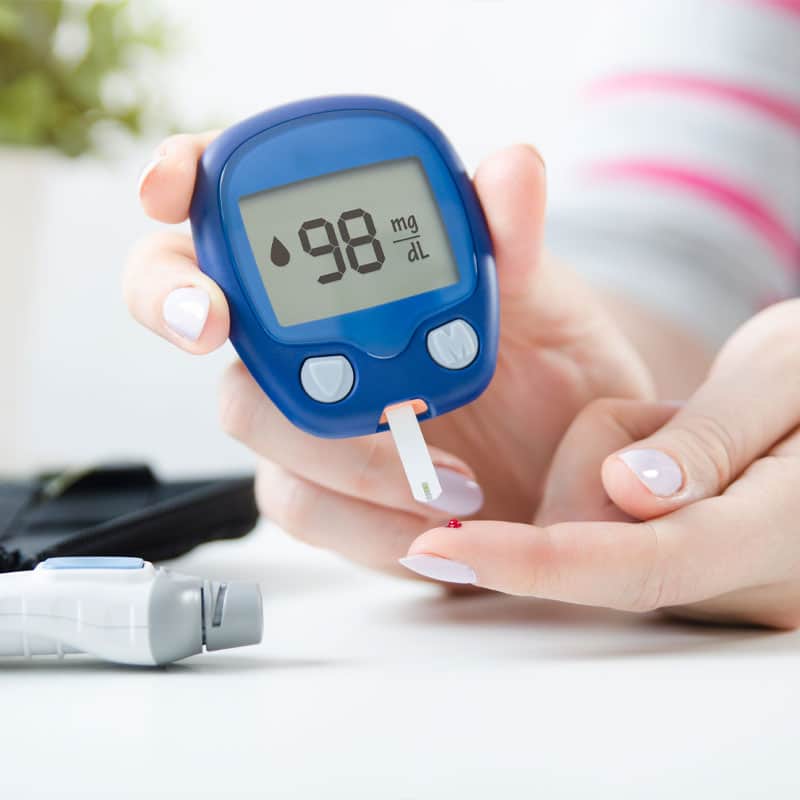Did you know that your period can tell a lot about your health? The American College of Obstetricians and Gynecologists reported that a female’s menstrual cycle should be a vital sign like temperature, blood pressure, and pulse. Your hormone health affects your menstrual cycle, which controls numerous bodily functions, including metabolism, heart rate, and respiration rates.
What Is a Normal Period?

During your period, your uterus sheds its lining. Typically, a period lasts between three and seven days, and the average menstrual cycle is between 28 and 32 days. Many women experience various symptoms in varying degrees, such as breast tenderness, bloating, food cravings, headaches, cramps, fatigue, and mood swings.
You can determine what a “normal” period is like for you by tracking the severity of your symptoms, the duration of your period, the length of your menstrual cycle, and the color of your period blood. Once you have that knowledge, you can quickly identify changes and report them to your doctor to ensure no underlying health conditions.
Period Blood Color Meaning
One of the best ways to identify potential issues is to look at your period color. Period blood can alert you to thyroid issues, hormone imbalances, Polycystic ovary syndrome (PCOS), and much more. Period blood can be a host of colors, including pink, bright red, and brown. Let’s examine what each color may mean and when you should contact your doctor.
Bright Red Blood – Bright red blood is fresh and a sign of a standard, healthy period, typically occurring at the beginning of your cycle.

Dark Brown Blood – If you notice dark brown blood, don’t panic; this coloring is regular. When this occurs, it is oxidized blood and bits of the lining of your uterus. The blood can range from light brown to almost black. The shedding of the uterine lining is as unique as you are. This condition typically occurs at the beginning or near the end of your period.
Dark Red Blood with Clots—Some clotting is normal; however, if your clots are more significant than a quarter, they can indicate a hormonal imbalance, such as high estrogen or low progesterone. If you are experiencing clots, reduce your consumption of sugar, dairy, and soy products. Another reason for clotting is fibroids. Although fibroids are typically benign, they can still cause much pain.
Gray and Red Blood – Gray and red blood can be a sign that you have a gynecological infection. You must seek help from a women’s health doctor as soon as possible. If you notice gray tissue that looks similar to the liver, it can be a sign that you are pregnant and having a miscarriage. Treatment for both of these is vital to your gynecological health. If treatment is not received ASAP, it can permanently damage your uterus or cervix, resulting in infertility.
Pink Blood – If your period blood is pink and you have a lighter-than-normal flow, you may have low estrogen levels, which can increase your risk of osteoporosis. In addition to this, pink blood can signal perimenopause, polycystic ovarian syndrome, and poor nutrition.
Watery Looking Blood
Watery-looking blood could be an indication that you have a nutritional deficiency. If your flow is diluted and has a whitish appearance, it can be a sign of anemia. If you notice a lighter-colored period than is ordinary, watch your cycle. Contact your women’s healthcare professional when it doesn’t change in two or three cycles.
Heavy Blood Flow
The flow rate of a period will vary from individual to individual. Heavy flow lasts longer than seven days, and you must change your tampon every two hours or less. Some of the common causes of heavy menstrual flow include fibroids, hypothyroidism, and a slow clotting process. In addition to this, certain medications can affect your bleeding, including non-hormonal copper IUDs, the Depo Provera shot, and certain birth control pills. Excess or heavy vaginal bleeding can lead to iron deficiency or anemia.
Irregular Cycle
Everyone’s cycle is different. One woman may have periods that run like clockwork, and another woman’s period will be irregular. If you are experiencing an irregular cycle, talk with your doctor. One of the main reasons for irregularity is elevated cortisol levels. Cortisol is a hormone produced and released when you are stressed. When cortisol levels become elevated, it can prevent the signals that tell your body to release an egg, which can cause your period to show up late or not at all. Irregular periods can also be due to polycystic ovary syndrome, excess exercise, or uterine scarring.
Menstrual Cramps

Abdominal cramping is a common menstrual symptom. Typically, it is mild; however, it can be pretty severe. The uterus contracts as it sheds its lining. During this process, hormone-like prostaglandins are released into the body to help you shed the lining in your uterine. If the body releases a lot of prostaglandins, you will experience more painful cramping. Another cause of painful cramps is endometriosis. Endometriosis causes the lining of your uterus to grow outside the uterus and can wrap around the fallopian tubes, ovaries, and other tissues in the pelvic region. This misplaced tissue can cause excruciating cramps.
You can learn much about your health by considering your menstrual cycle. Is it regular, or does it show up at various times? Do you have severe cramping? Is your flow heavier than usual? These, as well as your menstrual blood, can be an indication of an underlying health condition like a thyroid imbalance, unbalanced hormones, endometriosis, polycystic ovary syndrome, or fibroids. If you notice changes in your menstrual cycle, contact our integrative practitioner, specializing in women’s health issues, period pain as well as menopause treatment.





















